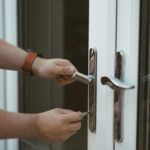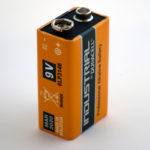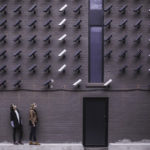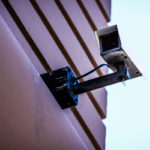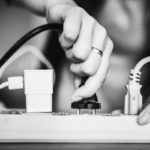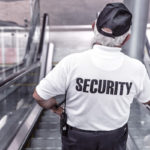Video Surveillance For Businesses
Installing a video surveillance system for your business protects your employees, customers, inventory, and your business itself. Understandably, such an important asset can take a considerable amount of time and money when it comes to shopping, deciding, installing and implementing a comprehensive security solution. If you’re on the fence on whether or not to purchase and install a video surveillance system for your business, review some of these priceless benefits you can enjoy.
- Reduce & Prevent Theft
Strategically placed security cameras can prevent vandalism and theft. Year after year, companies lose thousands due to theft, whether internal or external. By installing surveillance videos, you can deter bad behavior or collect evidence when needed. - Real-Time Monitoring
Most modern cameras allow for remote video monitoring. This can be extremely helpful for business owners who are not always on site. In addition, approved employees can monitor critical areas of the property, enabling continuous surveillance. If you have multiple locations, you can connect all the cameras to the same network, allowing you to keep an eye on every location remotely. - Improve Productivity
The presence of security cameras can influence employees to be efficient and on their best behavior. The cameras can also improve communication between different locations and departments, which can boost productivity overall. - Resolve Business Disputes
Much like cameras can provide evidence for thefts or vandalism, video footage can prove valuable when a dispute arises as well. Managers can reference video footage along with firsthand accounts to find out what happened in order to come to a fair resolution. Security cameras can also play a role in reducing workplace violence. - Provide Evidence For Investigations
As mentioned, video surveillance footage can provide evidence when an incident occurs. By reviewing the footage when criminal or suspicious activity occurs, you can potentially identify the persons involved. And you may submit footage to authorities as needed. - Make Digital Storage
In relation to reviewing footage, digital storage makes it much easier to search and find footage when needed. IP camera systems store all recorded footage digitally using a hard drive, network served or an NVR (network video recorder). - Improve Customer Experience
With the use of data analytics with your surveillance, businesses can optimize store traffic patterns and improve product placement. They can also offer a better shopping experience as customers may perceive the presence of security cameras as the business caring for the safety and security of their customers and employees. - Save Money
Video surveillance systems can be more affordable than hiring full-time security officers for the grounds. And thanks to advanced night vision features, most security cameras can give you peace of mind even when your business is unoccupied overnight.
Whether for your business or home, shopping for a security camera system can be overwhelming. If budget is a concern, or you are unsure of what you need, we can help. Call 888-203-6294 and we can guide you to the cameras and equipment that would best suit your needs and budget. We offer a wide variety of affordable security cameras and surveillance systems – browse our stock online at SecurityCamExpert.com. You may also connect with us on Facebook, Twitter, LinkedIn, and Pinterest.
Choosing The Best Nanny Cam
Nanny cams help worried parents keep an eye on their kids or their own elderly parents. They allow individuals to check in at home for peace of mind. Whether you will be installing them in hidden areas or in plain sight, here are a few things you should consider when purchasing a nanny cam.
- High Definition (HD)
This is a video format which delivers a high pixel rate for improved clarity. While this is a great feature to have, it does increase the price and requires more storage. Think about your storage requirements, budget, and individual needs before making a decision. - Audio
Nanny cams with audio let you speak to the persons in the room remotely. Before choosing a camera with two-way audio features, please look into legalities and follow the audio recording laws when you need to record audio. - Wireless
Wireless security cameras allow you to watch live video feeds rather than recording for later review. You may want to opt for wireless cameras if you will be using them for a baby monitoring system. - Compatibility
For remote monitoring, you want to be sure that your nanny cams are compatible with your smartphone or devices. That way, you can easily check in on your kid or parent and caregivers while you’re away. - Motion Activation
Because monitoring our surveillance feed 24/7 is not feasible, motion-activated alerts are a great asset. Motion activation immediately sends you alerts when motion is detected in the range of view. - Recording
While most nanny cams allow video recording on a SD card, this limits your storage capacity. For improved storage and reliability, choose a nanny cam with a network video recorder (NVR) or cloud storage. - Viewing Angle
Choosing a wide-angle nanny camera will depend on the size of the room or area you would like to cover. If you do have a large space to monitor, be sure that your security camera has a pan-tilt function. - Power Source
Typically, you can choose between battery-powered or AC power nanny cams. Battery-powered nanny cams use rechargeable battery packs, while AC powered cameras are powered directly from the outlet. Your decision may be dependent upon where you plan on placing your nanny cam. If no outlet is available in the area, you may need to use a battery-powered nanny cam. Be sure to look into battery life and invest in a backup battery should you go that route. If you need ongoing monitoring and recording, you may want to consider AC powered nanny cams.
If you need assistance choosing a nanny cam or home security cameras, please do not hesitate to call 888-203-6294 to speak with us. You may also browse our stock online at SecurityCamExpert.com or connect with us on Facebook, Twitter, LinkedIn, and Pinterest.
Why You Should Install A Dash Cam
Dash cams are growing in popularity as more and more drivers are finding value in installing them. Whether you install a simple, front-facing dash cam or invest in a more comprehensive monitoring system for your vehicle, there are many ways these devices can benefit you. Here are a few reasons why you may want to consider installing a dash cam in your car.
- Accidents
When accidents occur, drivers recollections can vary. Normally, police would gather reports from those involved in the accident along with any eye witnesses. However, with dash cam footage, you have hard evidence of the incident which can help determine who was at fault and potentially save you from increased insurance rates. In addition, the video footage can possibly expedite your claim by avoiding numerous discussions with insurance companies to determine who was at fault. - Tickets
Your dash cam may save you from a wrongfully issued ticket. Since moving traffic violations typically give you points on your state driving record, which usually result in higher car insurance rates, it may be worth it to install a dash cam. If you feel you were wrongfully stopped, you can supply the officer with your dash cam footage. If the officer refuses to watch it, you can bring it to court to contest your ticket. - Insurance Fraud
Unfortunately, insurance fraud is more common than you would think. If you feel you may have been involved in or witnessed a staged accident, your dash cam footage can be turned into the insurance companies involved or the state insurance fraud unit for investigation. - Improve Driving
If you feel so inclined, you can review your daily driving videos to become a better driver. You can watch your videos to identify driving mistakes and ways to prevent them, such as braking too hard or switching lanes abruptly. - Teenage Drivers
If you have teenage drivers in the family, you can review their driving skills and habits so you can help them avoid accidents or tickets. For these cases, a two-way dash cam can help you see what’s going on both on the road and inside the vehicle. Not only can this help keep your child safe, but a clean driving record can keep your insurance rates low as well. - Security
Some dash cams provide a standby mode which allows the camera to turn on when motion in or around the car is detected. If someone tries to break into your car or hits your parked car, you get video footage to identify what happened and the persons responsible. You can submit this as evidence to the police as well as your insurance company to prove how the damage was done. - Unexpected Events
You’ve seen those viral dash cam videos that capture incredible events like meteors or other celestial events in the sky. While these are interesting and often once in a lifetime occurrences, you can also capture things like a deer running into the road causing an accident or a rockslide that caused damage to your car. In these instances, you can provide your insurance company with evidence to prevent rate hikes.
If you have a dash cam in stalled in your car, how have you benefited from it? What made you decide to install a dash cam? Share your experiences with your peers and us on Facebook, Twitter, LinkedIn, and Pinterest.
Visit SecurityCamExpert.com to browse our selection of security cameras, CCTV surveillance packages and more. You can call 888-203-6294 to schedule a site survey or request a FREE quote today!
Safeguard Your Property
Spring is almost here! With warmer weather on the horizon, many of us may have vacations or weekend getaways planned. Before you leave your house unattended, make sure you’re doing your best to keep your home secure. Here are some helpful home security tips to safeguard your home and property.
Maintain Landscape
Your landscape can be an asset or a weakness to your home security, depending on how you utilize it. To protect your property, you want to limit the potential hiding places that your shrubbery can provide. Consider planting thorny bushes under your windows and be sure to keep them trimmed. You may also want to install motion-activated lights along your landscape to further discourage intruders.
Deter Porch Pirates
While online shopping is convenient, it leaves you susceptible to porch pirates. If you’re having packages delivered to your doorstep, work with the delivery companies to improve security. You can request a text when a delivery is made, require a signature upon delivery, or ask for packages to be left in a less prominent location. Another way to deter package theft is to install security cameras at your front door and around your home to monitor activity.
Hide Valuables
You don’t want anyone passing by your street to be able to see all of your valuables. Instead, arrange your furnishings in a way that they are less visible from the street-side window. Also, keep your garage openers and car keys out of sight from any window. Store these in a cabinet or drawer to keep them hidden.
Reinforce Entry Points
You want to be sure that any point of entry, whether window or door, has the proper protection. Exterior doors should be metal or solid wood and at least 1 ¾ inches thick. Protect your windows with locks or burglar-resistant glass, and reinforce sliding doors with a metal bar. A security alarm can also be beneficial by alerting you when a door or window opens as well as alerting authorities when your system is breached.
Practice Safe Behaviors
Personal habits can play an important role in your home security. Make it a habit to lock your doors and windows and arm the security alarm system whenever you leave. If you’ll be gone for more than a few days or on an extended vacation, you should make it look as if your home is occupied. Leave blinds as they would be usually, plan to defer your mail and other deliveries, and use light timers and smart home devices in different areas of your home. Bonus tip: If you are leaving your keys with a parking attendant, remove your house keys – tech-savvy thieves can duplicate your house keys by simply taking a picture of it.
Share your own home security tips with us and your peers on Facebook, Twitter, LinkedIn, and Pinterest. Browse our wide selection of CCTV security cameras, video surveillance systems and more at SecurityCamExpert.com or call 888-203-6294 today!
Choosing The Best Battery-Powered Wireless Security Cameras
When it comes to security cameras, wireless seems to be the easiest and most convenient option. While some wireless security cameras are not always completely wire-free (most still need to be connected to a power source), battery-powered wireless security cameras are making it much easier to build a completely wireless security system. Here’s what you should look for when it comes to battery-powered wireless security cameras.
- High Definition & Clear Quality
This is a must for any security camera, regardless of the type. Consider what you want to monitor and look for specifications and features that will satisfy your requirements. - Night Vision
Whether indoors or outdoors, if you want your surveillance around the clock, look for a battery-powered wireless camera that provides quality night vision. With these cameras, you should know that there are two types of night vision functions: infrared and starlight.Infrared is the most common and allows cameras to capture a clear vision in darkness thanks to IR LEDs built in around the camera lens. Starlight night vision has yet to gain popularity, but makes the most out of natural light to provide a crisper image than infrared.
- Wireless Capability, Wi-Fi Range, & Internet
Because battery-powered wireless security cameras are not tied down by a power source, you must really take the internet connection and Wi-Fi range into consideration when choosing locations. If you place your cameras in areas where there is spotty connection, your footage and overall security system could be compromised. Also, you must consider how many cameras you will be installing and whether or not your internet connection can handle it. - Durability
This is especially important if you will be installing your cameras outdoors. You want to choose security cameras that are strong and durable to withstand harsh weather conditions as well as normal wear and tear over time. For outdoor cameras, look for IP66 or IP67 weatherproofing casing as these ratings provide effective protection. IP stands for Ingress Protection, and this rating is the rate of effectiveness of the enclosure of the camera against dust and water. The numbers rate the protection against dust and dirt (first) and the protection against water and moisture (second) – the higher the number, the better the protection. - Battery Life
Fairly obvious, but battery life should be taken into consideration because without the battery, you have no functioning camera. Most of the cameras on the market today boast 6 months to 1 year of battery life. And most cameras deliver just that, while others do not. Be sure to pay attention to reviews and specs to ensure that you are getting what you pay for. But also, it is important to have backup batteries on standby.
What else do you look for in battery-powered security cameras? Share with us on Facebook, Twitter, LinkedIn, and Pinterest.
Find a great selection of security cameras, CCTV surveillance packages, and more when you visit SecurityCamExpert.com. Call 888-203-6294 to request a free quote or schedule a site survey today!
Restaurant Security: Night Vision Cameras
Night vision cameras offer a bit more than standard security cameras. The ability to see in low light to near darkness enables surveillance around the clock. While you may understand how this can help you feel safer at home, many businesses can also take advantage of these benefits. Here are some of the ways night vision cameras can be a great asset for restaurants.
- Vision In Darkness
Aside from keeping an eye on the premises overnight, night vision cameras can do their duty during late night business hours. If customers are staying late, it can help make the closing staff feel safer. - Easy To Install & Use
Most night vision cameras are fairly straightforward with their design, some being plug-and-play, making them easy to install and use. - Central Monitoring
Depending on your system, you should have access to any camera feed at any location at all times. If your system permits, this may even be accessible remotely via your smart device or a laptop. - Transferrable Feed
Your recordings can immediately transferred to disk for long term storage. This backup allows you to review past video or share footage promptly should authorities require video evidence of an incident. - Prevent Theft
The simple presence of a security camera can deter burglars from acting. However, in a restaurant setting, these things can easily be overlooked. With surveillance cameras, you may be able to improve inventory control and prevent employee theft. - Prevent Over-Pouring
Along the same lines, if you have a bar in your restaurant, you can keep an eye on your bartenders. Over-pouring is way to lure customers to leave larger tips, but can leave you at a loss. If you come across this issue, you can refer to your footage and correct the problem. - Reduce Violence
Whether among customer, employees, or both, security cameras can help to reduce violence or provide helpful evidence when a problem arises.Night vision cameras can also make your employees feel safe, as mentioned. Employees are happier with employers who show that they care about their safety and well-being. - Boost Productivity
Security cameras in the workplace can alleviate management from the task of security as well as motivate employees and keep everyone on task.
For a wide selection of night vision cameras, surveillance system packages, and more, please visit SecurityCamExpert.com or call 888-203-6294. You can also connect with us on Facebook, Google+, Twitter, LinkedIn, and Pinterest.
Security Cameras: Do’s & Don’ts
Security cameras help to protect homes, businesses and various properties from burglaries, vandalism and more. Unfortunately, if they are not installed properly, they can do more harm than good. Before you invest and install a video surveillance system on your property, review these security camera do’s and don’ts.
DO:
- Place the camera where the roof or ceiling meets the wall.
This spot naturally shields the camera from the elements, and it can usually give you the widest angle of viewing. - Protect your cameras from weather, tampering, and vandalism.
Depending on your security cameras location, you may need to invest in a weatherproof casing to shield it from environmental conditions. Also, be sure to mount your cameras out of reach and with a protective plate to prevent criminals from tampering, disabling, or damaging your equipment. - Securely mount your surveillance cameras.
Be sure that your cameras don’t shake or wiggle if walking or other movement sends vibrations to the wall. This instability could distort the images that your camera is transmitting and could potentially cause damage to your cameras. You may need additional mounting brackets or equipment to ensure your cameras are securely mounted. - Place cameras in heavily-trafficked or shrub-heavy locations.
Because bushes provide cover for intruders, having a camera monitor these potential hiding spots will improve your surveillance. You also want to have eyes on areas with heavy traffic such as walkways or gates. - Set your base unit in your attic.
This is often the most convenient spot for all of your cameras’ wiring to originate from. It also minimizes the need to string cables up and down walls if they can be run on the insides of your eaves under your roofline.
DON’T:
- Just install a camera in an area that won’t be well-lit at night.
If you want surveillance around the clock, be sure that your security cameras have night vision or an infrared setting or lens that works in low light. For outdoor cameras, pair your cameras with exterior lighting with motions sensors if possible. - Attach a camera to a gutter.
This is always a bad idea. Despite being high up and out of reach, the camera is completely exposed to the weather and its weight will put undue stress on your guttering system. - Limit your cameras to just your front door.
You should be monitoring all areas where criminals can potentially gain access. Install surveillance cameras near your back doors, side entrances, and sliding glass entryways. You may want to consider a security camera at the top of your basement stairs in case someone gains access to your basement. - Place a camera right above a basement window.
This location leaves your camera within reach to be disabled or vandalized. Instead, mount a camera under the eaves or even a second-story roofline and direct the lens toward the basement window. - Assume wireless means “completely wireless.”
This is not always the case. Even if your surveillance system operates using wireless signals, each camera and your base unit will still need to be plugged into a power source.
Share your own tips with us and your peers on Facebook, Google+, Twitter, LinkedIn, and Pinterest.
Your security is our priority! If you need help choosing the best security cameras for you, feel free to browse our selection online at SecurityCamExpert.com or call 888-203-6294 to speak with a representative directly.
Mounting Outdoor Security Cameras
Outdoor security cameras aid in your first line of defense against criminals. The presence of outdoor security cameras can deter burglars from targeting you, or they can provide key evidence should an incident occur. Thus, the installation and mounting of your outdoor security cameras play an important role in the success of your surveillance system overall.
Height
Whether for home or business use, the height of your camera will determine what you can capture and the quality of the images. In a business setting, the camera should be able to view the surrounding area while still adequately capturing the faces of incoming customers and those around the front door. Thus, a security camera mounted at least 10 feet high should properly capture the faces and body types of individuals. For homes, you should mount a camera at least 3 feet above your front door and another at least 10-20 feet up to capture vehicles that enter and exit your driveway.
Location
If your cameras are not in the right location, they won’t be able to record crucial footage. You want your security cameras to cover all the main entrances to your business or home, as well as any potential weak spots (ex. first floor windows). For businesses, you also want to monitor your parking lot. Surveillance cameras in parking lots should be in a location that allows them a clear view of customers’ vehicles. And as mentioned, you should have a home security camera devoted to monitoring your driveway.
Visibility
Surveillance camera laws can vary from state-to-state, however, hidden cameras in private places, such as bathrooms, changing rooms, or locker rooms, are forbidden in all states. Since outdoor security cameras are not located in private places, they can be hidden to some extent. But again, the visibility of security cameras alone can play a role in discouraging potential burglars from striking. If you decide on hiding your outdoor cameras, be sure to place a sign on your property informing guests and visitors that they are under surveillance.
How have outdoor security cameras helped keep you safe? Want to share your own tips? Connect with us on Facebook, Google+, Twitter, LinkedIn, and Pinterest.
Browse our selection of outdoor and indoor security cameras, along with PTZ cameras, network IP cameras, surveillance system packages, and much more at SecurityCamExpert.com.
Troubleshooting Tips For IP Security Cameras
After investing your time and money into choosing the best security cameras to suit your needs, it can be frustrating to come across issues with them not working properly. When your security system is down, not only is it a nuisance, but it can leave your property vulnerable.
Before giving up on your security cameras and shopping for new ones, review these troubleshooting tips for common security camera issues.
- Connection & Power
Though it may seem like common sense, sometimes we overlook the obvious. If your security camera is not working, check all of the connections. Make sure that the camera is correctly connected to the power source as well as any other devices.For wireless security cameras – Check the Wi-Fi connection (if the wireless security camera is connected successfully via Wi-Fi). You can use a network cable to test the network connection. Ensure your router is working properly and, of course, check the power supply.For wired or PoE security cameras – Make sure video signal and power supply is well transmitted. For a PoE security camera, check the PoE injector or PoE switch is in order, compatible and working. If you have an NVR security system, double check that all the connections to the system are correct and secure.
- Cabling
A majority of connection issues center around cabling problems. For example, if the IR LEDs do not turn on at night in the dark, it is likely a cable problem and no images or video recordings will come out.To check this, use another cable to connect the camera to see if the problem is solved. For a PoE security camera, you use a Cat 6 or Cat 5 Ethernet cable.
- Settings
It is easy to forget about camera settings. You may find that your security camera doesn’t do 24/7 recording, no motion detection alerts, can’t connect to Wi-Fi, or can’t record video at night all because you did not set up the settings. Remember: Security cameras do have features, some of which have been enabled by default and some that need manual enabling on your end.There is usually computer software or an app for a mobile device that is in place so you can easily control and manage your system, such as adjusting the settings accordingly.
- Reboot
The “Golden Rule” in IT troubleshooting is to reboot the device. When you reboot a security camera, it flushes the cache, recalibrates the settings, and revises the connections. To reboot you camera, directly unplug the power supply, wait for a few seconds, and plug it in again. - IP Address
Each IP security camera needs to have a unique IP address so it can send and receive data via the Internet or a computer network. If there is another device using the same IP address with the camera, there will be a conflict and your security camera will not work. If you are experiencing issues, check the IP addresses to resolve any conflicts.There are two ways to check:
- On a computer that is connected to your cameras, go to the Windows search box and type “cmd” to open the DOS command prompt. You can type the command “arp -a” to see if there are any IP conflicts.
- You may type the command “ping cameraIPaddress -t” (ex. for IP address 192.168.0.999, type “ping 192.168.0.999 -t“). If you received results with “Unreachable” or “Timed Out” it means the IP security camera is not connecting to the network. You should change the camera’s IP address or assign a new one.
- Update Firmware & Software
Most manufacturers regularly release firmware updates to fix security camera issues and glitches, and also to add new features. Make it a habit to regularly check the brand’s official website to see if new firmware has been released for your camera and update accordingly. Remember to make sure the firmware you download is the correct version for your security camera.If you can’t connect to the security camera via software, it’s likely due to incompatibility of the software and firmware. If you are updating your firmware, be sure to check for updates for your software as well.Remember, it is best to use the software or app from the manufacturer since it is designed to work with all the features of your security camera without compatibility issues. While third-party software exists, it may or may not be fully compatible with your cameras.
- Reset To Factory Default
This is often one of the last ditch efforts to resolve an issue. Factory reset means all settings and configurations will be removed and will go back to the “factory default” settings (you will need to enable features and other configurations again).Some security cameras come with a reset button, while others may come with a pinhole as the reset function, requiring a needle to enable factory default.
- Manufacturer FAQs
Most of you problems or questions can be answered by checking the FAQ section of your manufacturer’s website. Search keywords about your problem and you should get related troubleshooting methods. - Tech Support
If the FAQ section did not help, you may want to reach out to the company from which you purchased your equipment. Most companies offer tech support and you can reach out via email or phone call. Remember to provide as much details as possible and a professional technician should be able to help you fix the problem or offer alternative options accordingly.
If you need help choosing the right security cameras for your property, as well as installation services, feel free to contact us! You may browse our selection online at SecurityCamExpert.com or call 888-203-6294 to schedule a site survey or get a free quote. You can also find us on Facebook, Google+, Twitter, LinkedIn, and Pinterest.
Security Measures For Large Events
With the big game going down this Sunday, security for large-scale events is on our minds. Unfortunately, heavily publicized events that draw substantial attendance and large crowds tend to be prime targets for attacks and incidents. Luckily, proper security measures can prevent dangerous incidents from escalating further, or, ideally, from even happening at all. Here are a few things to keep in mind when it comes to event security.
- Security Posture
It is crucial to make security efforts visible. Bag checks, vehicle-free zones, and uniformed personnel make all the difference. - Constant Vigilance
Security personnel should be prepared to handle the crowd beforehand and screen every guest that enters, but security measures should remain in place throughout the entire event. It may be feasible to reduce some personnel when a majority of attendees have entered, however, no one should be able to enter the facility at any time without going through the same screening as everyone else. Once the event is underway, it makes it easier for potential attackers to move without being noticed. - Outdoor Security
If you uphold strong indoor security, an attacker may decide to carry out his actions outside. This makes it vital to maintain additional security measures around the perimeter and beyond (ex. mass transit connections, tailgate areas, merchandise locations). Typically, perpetrators will target large, dense gatherings of people. Spreading out locations to disperse crowds with ample security personnel makes it difficult for attackers to select a prime target. - Layers Of Security
As you may already tell, several layers of security are crucial. For example, your first layer of security may be traffic control personnel, who limit vehicle access to the venue and can watch for suspicious activity and individuals. Another layer may be personnel looking for potential criminal behavior in parking lots or directly outside the venue. Next would be the bag checks, magnetometers, and pat-downs to ensure prohibited items stay out of the venue. On the inside, you want to monitor the activities and prepare for the appropriate response, such as getting individuals to exits safely and getting emergency responders to the scene of an incident quickly. - Communication
Keep attendees informed about prohibited items and any other policies and rules before the event. These communications can be distributed with the help of ticketing outlets and public media. Getting this information out beforehand will help security lines and bag checks move smoothly and quickly, decreasing traffic and delays at the entrances. - Offsite Security Command Center
It makes sense to maintain a security command center onsite so that it is easy for people to find them if necessary. However, perpetrators know they can inflict more damage if they take down the command and communications center first. To combat this, while still maintaining an office within the venue, many facilities are moving the main command center offsite. By doing so, should an incident occur and the onsite center is compromised, security will still have eyes and means of communicating with the security personnel on site and still coordinate an appropriate response.
Tragic events over the years have forced us to reevaluate and tighten our security measures to keep the public safe. Now more than ever, security and emergency response personnel must work together to prevent and respond to major incidents. As an attendee, remember to be aware of your surroundings, and if you see something, say something.
For affordable, quality security systems, visit SecurityCamExpert.com or call 888-203-6294! We are happy to provide you with a free quote, schedule a site survey, or assist you with any questions you may have. You may also connect with us on Facebook, Google+, Twitter, LinkedIn, and Pinterest.



